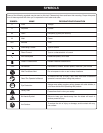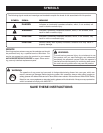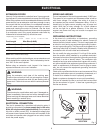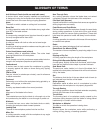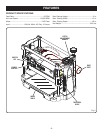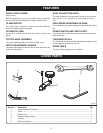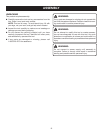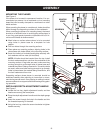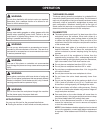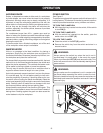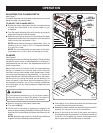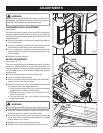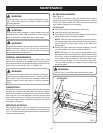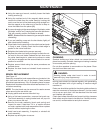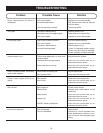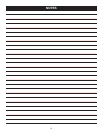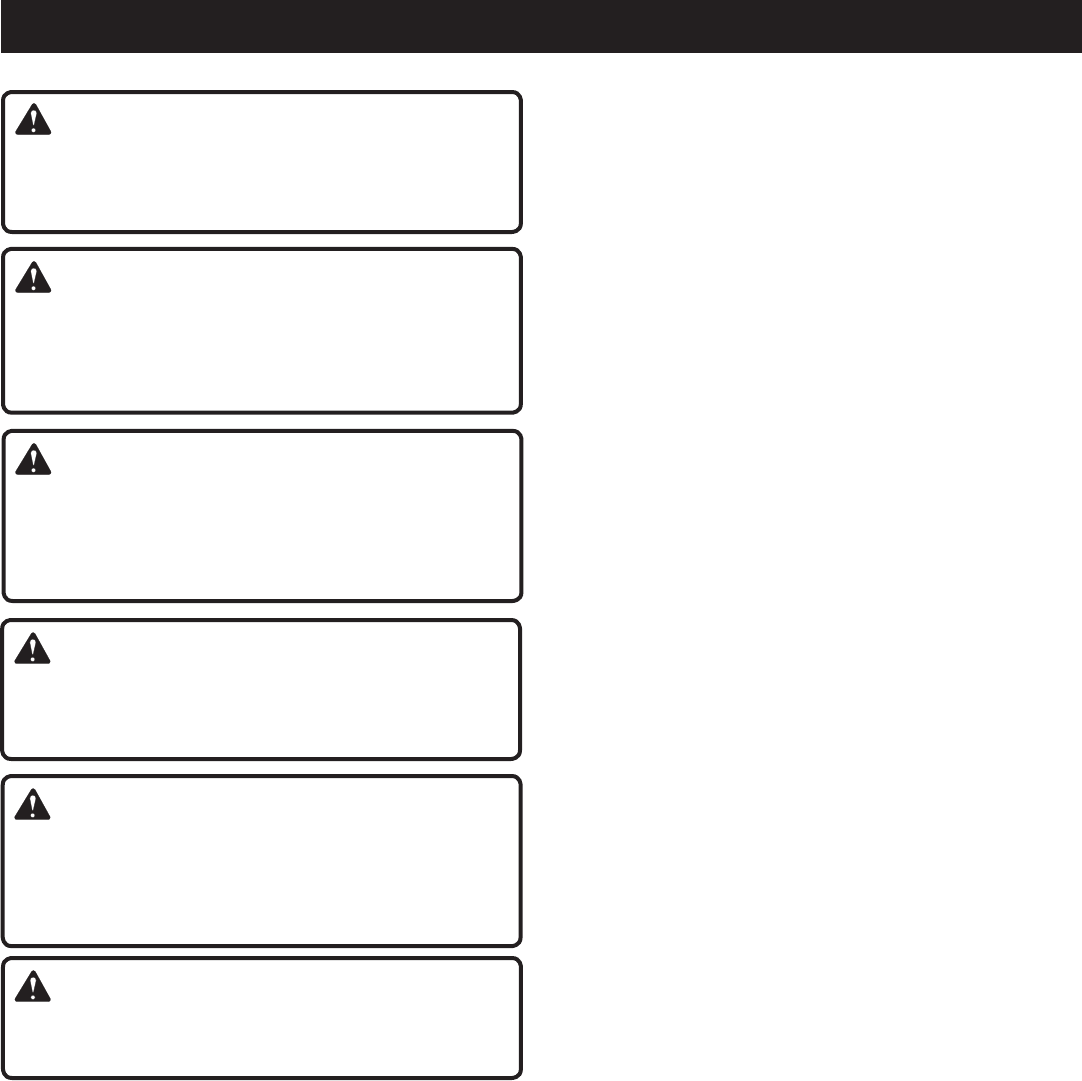
14 15
OPERATION
WARNING:
Do not allow familiarity with tools to make you careless.
Remember that a careless fraction of a second is suf-
ficient to inflict serious injury.
WARNING:
Always wear safety goggles or safety glasses with side
shields when operating power tools. Failure to do so
could result in objects being thrown into your eyes re-
sulting in possible serious injury.
WARNING:
Do not use any attachments or accessories not recom-
mended by the manufacturer of this tool. The use of at-
tachments or accessories not recommended can result
in serious personal injury.
WARNING:
The use of this planer on materials not recommended
may damage the planer and may cause serious personal
injury.
WARNING:
Never plane a workpiece with loose knots or foreign ob-
jects. Do not plane workpieces that are severely bowed,
twisted, or knotted. Cutter blades can dull, chip, or break,
causing possible serious personal injury.
WARNING:
Do not force feed the workpiece through the machine.
Let the planer apply the proper feed rate.
APPLICATIONS
You may use this tool for the purpose listed below:
n Planing the surface of solid wood and wood products
THICKNESS PLANING
Thickness planing sizes the workpiece to a desired thick-
ness while creating a smooth, level surface. The thickness of
each cut will depend on the type of wood (hardwood versus
softwood), width of workpiece, straightness, dryness, and
grain composition. Whenever working with a new type of
wood, make thin test cuts on a scrap piece of wood first to
determine potential problems with the workpiece.
PLANING TIPS
n Thickness planers work best if at least one side of the
workpiece has a flat surface. When both sides of a
workpiece are rough, use a surface planer or jointer first
to define the initial flat surface. Plane one side of the
workpiece, then flip the workpiece and plane the surface
of the reverse side.
n Always plane both sides of a workpiece to reach the
desired thickness. This will leave the workpiece with
uniform moisture to prevent warping during the drying
process.
n When one end of the workpiece is thicker than the
opposite end by more than 1/8 in., make several cuts with
the planer starting with light planing cuts first. Remember,
light cuts create a finer finish than heavier cuts.
n Do not plane a workpiece less than 3/16 in. thick.
n Do not plane a workpiece less than 3/4 in. wide.
n Do not plane a workpiece shorter than 14 in. long as this
will cause kickback.
n Do not plane more than one workpiece at a time.
n Do not lower the cutter head assembly lower than
3/16 in.
�n Do not use the planer set at the maximum depth of cut
(1/8 in.) and at full width of cut (13 in.). Continuous use
at maximum cutting capacity will damage the motor.
n Worn cutter blades will affect cutting accuracy. Planing
with dull or nicked cutter blades may produce ridges or
rough workpiece surfaces.
n Gum and pitch on the cutter blades will cause them to
wear prematurely. Using a gum and pitch remover to keep
the cutter blades clean will prolong their wear.
n Refer to the Maintenance section of this operator’s
manual for instructions on how to remove and replace
or turn the cutter blades.
NOTE: Cutter blades are double-edged and can be turned
once to the opposite, unused edge before replacement
is required. Cutter blades must ALWAYS be replaced as
a set.



